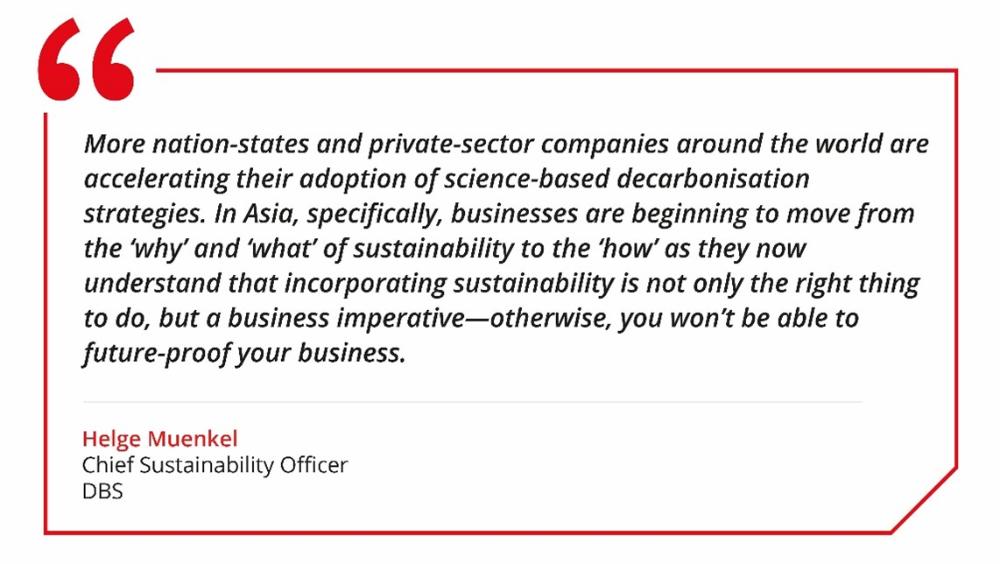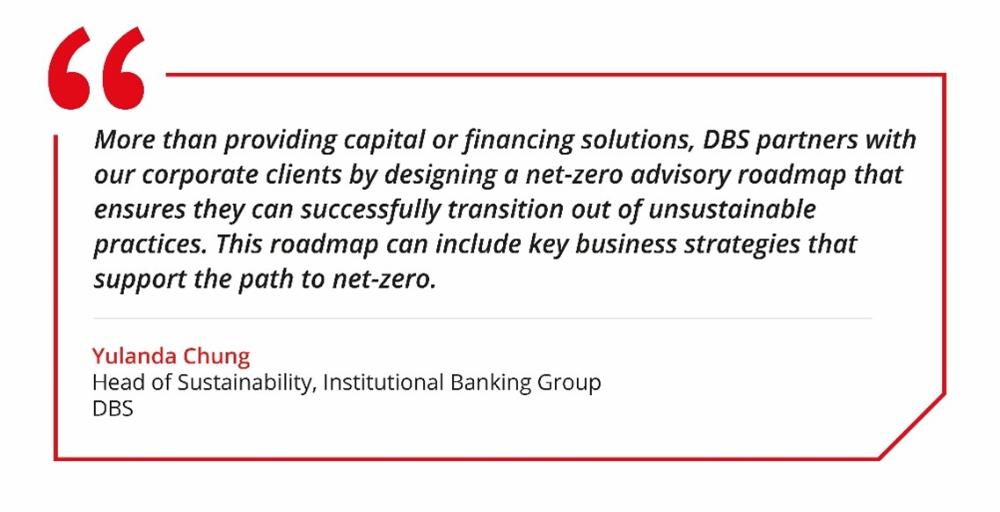Journey to a Low-Carbon Economy Through Transition Financing and Carbon Credits
Multinational corporations are grappling with multiple challenges related to reducing emissions in their Asia-Pacific operations, especially Scope 3 emissions. They face difficulties with designing and executing carbon reduction roadmaps that are effective enough to meet ambitious decarbonisation goals. For corporates keen to accelerate decarbonisation but aren’t sure how two powerful enablers to consider are carbon offsets and transition finance.

It has become increasingly clear that speed and volume are both needed in carbon emissions reduction if there is to be any hope of avoiding catastrophic climate change. Rapid global warming, increased loss of biodiversity, and recent tragic developments in Ukraine have only placed greater strain on the world’s natural, food and energy resources, adding to the urgency of decarbonisation.

In Asia-Pacific, there is a need for different stakeholders to come together in a collective effort to move the needle in sustainability. Transitioning to a low-carbon economy presents both significant opportunity and challenges, but successful transition on a larger scale requires a concerted effort between policy, technology, and capital.
Thankfully, greater policy support, including the recently announced Singapore Green Plan 2030, is growing in the region to provide financial or tax incentives for businesses to decarbonise. Technology such as blockchain is also allowing us to develop more sustainable practices through carbon credit exchanges and trade digitalisation. Furthermore, capital is available to help businesses of all sizes reduce emissions through visible, measurable and impactful ways across their entire supply chains.
Enabling carbon offsets through carbon credits
Nations and companies of all sizes are engaged in an uphill battle counteracting greenhouse gas (GHG) emissions. Rapidly industrialising nations, for example, or businesses in shipping and airline industries where it’s impossible to avoid GHG emissions altogether need an alternative mechanism for decarbonisation.
That’s where carbon offsets come in.
Corporates look for assurance that the credits they buy will deliver tangible, lasting climate impact. Climate Impact X (CIX), a global carbon exchange and marketplace, provides corporates with high quality carbon credits and effective solutions to tackle climate change. Headquartered in Singapore to leverage the country’s internationally recognised financial and legal infrastructure, it is the world’s first carbon exchange and marketplace to use satellite monitoring, machine learning and blockchain technology to enhance transparency, integrity and quality of carbon credits.
But keep in mind: carbon credits are only meant to be one part of a larger decarbonisation strategy. Prevention, reduction, fuel substitution and emissions neutralisation should all be considered before turning to compensation by carbon credits.
The path to Net-Zero demands operational emissions reduction – but how?
The path to net-zero should not and cannot be powered only by new green projects such as renewable energy, green real estate, or electric vehicles. To truly make headway in reaching net-zero targets, DBS advises its clients to achieve operational emissions reduction, before using carbon credits.
As companies need capital to fund their move incrementally from brown to green, this is where financial institutions and banks can make the most significant impact in accelerating Net-Zero goals. DBS is a strong advocate of transition financing, which gives more corporates access to capital needed to fund technology upgrades, digital transformation, innovation, or even a full business pivot to reduce emissions.
Explains Yulanda Chung, Head of Sustainability, Institutional Banking Group at DBS: “The reason we came up with transition financing is that we have seen a lot of the green loans and green bonds in the market, yet we still see the underlying assets remain predominantly renewable projects, green buildings, and real estate. And maybe a little bit of mass transportation. They do not represent the real economy.”
Compared to the more commonly used green finance solutions, the spectrum of industries that transition finance can engage with is much wider, and, as a result, it allows those carbon-intensive companies to finance their journey of shifting away from fossil fuels.
To help clients advance on sustainability agenda, DBS was the first commercial bank in the world to publish a Sustainable and Transition Finance Framework and Taxonomy, developed to facilitate the categorisation, monitoring and reporting of financing of sustainable activities, and serves as a reference guide to clients to adapt and build resilience in the face of climate change, resource scarcity, and social inequality.
Beyond transition financing, there is a whole suite of green financing products and services available for businesses that are genuine about accelerating their net-zero roadmap. With DBS specifically, corporates can leverage trade financing solutions and transaction services to incentivise end-to-end supply chain sustainability, from certification to traceability to profitability—thus reducing Scope 3 emissions reduction across suppliers and unique buyers.

Through our consulting services, we aim to give clients a clearer view of their carbon footprint, make it easier to monitor their GHG emissions, pinpoint opportunities for improvement, and more—both for their own organisation, and throughout their supply chain.
Added Terence Yong, Group Head, Western MNC, Corporate Banking at DBS: “Sustainability enablers can bring capacity to capital expenditure investments, defray high working capital costs, and encourage those in supply chain to be able to produce more sustainably. Beyond that, we identify and qualify suitable Asia-centric platform partners to facilitate measurement and traceability, accelerating the deployment of our clients’ ESG strategies.”
Helping clients move towards a low-carbon economy through transition financing
The real value of transition finance is that it helps companies—carbon-intensive businesses—move from brown to “light-green”, before continuing their journey towards green financing. This helps our clients take incremental steps to become greener and avoid accusations of “green washing” on that journey.
Here are a few case studies of how DBS has worked with clients on their journey to net-zero:
- DBS Bank has partnered with one of the world’s largest fashion retailers, Inditex, which owns brands such as Zara, Pull&Bear, and Bershka, to launch an organic cotton procurement financing pilot programme. DBS is leveraging the network of local Farmer Producer Organisations (FPOs) to reach more than 2,000 farmers in Inditex’s supply chain to ensure that they get on-time payments as an incentive for growing organic cotton. This provides farmers greater visibility of their cash flow, enabling them to better plan their business needs and in turn, grow their sustainable farming operations without reliance on local moneylenders.
- Finnish packaging company, Stora Enso, was seeking an experienced banking partner to provide supplier financing solutions to achieve sustainable production targets. Through its DBS Digital Supplier Onboarding, Stora Enso managed to expand its supplier base significantly in a short period of time. Plus, the bank also improves the long-term sustainability of Stora Enso’s supply chain by keeping its suppliers afloat with timely access to low-cost financing.
Visit our Sustainability page to learn how DBS is supporting a sustainable future through long-term value creation and strong partnerships or leave us your contact details to find out more about how we can work with you to achieve your sustainability goals.
business goals through our suite of expertise, technology and solutions.


